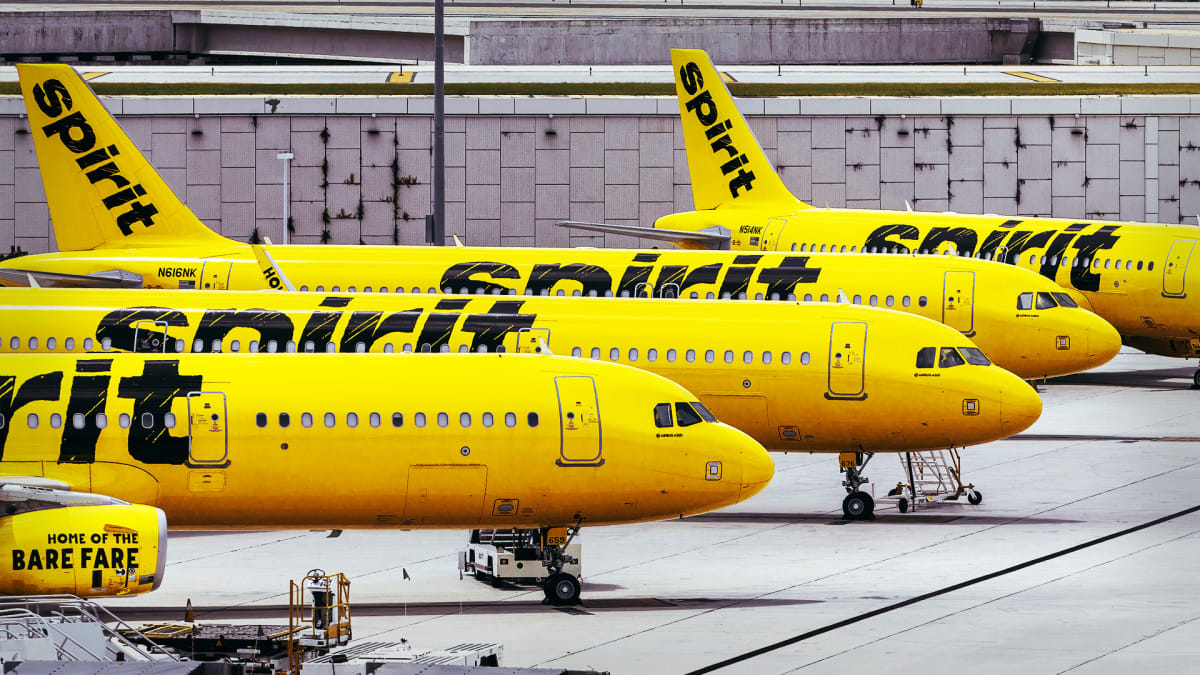
Spirit Airlines (SAVE) offers a fairly simple proposition: Customers pay very low prices but get little other than seats -- and not specific ones -- on the planes.
Everything from a carry-on bag to the opportunity to choose a seat costs more, and it's all a la carte.
Technically, if you want to fly with only a small personal item and are willing to wait for the last available seat, you can fly on Spirit for just the price of a ticket.
That might work for someone going on an overnight trip or flying in and out for a business meeting on the same day. Most people, however, have to purchase add-ons, which can cost as much if not more than original tickets.
I traveled Spirit from Fort Lauderdale, Fla., to Las Vegas. Normally, I fly Southwest (LUV), as I have A-List status with that airline. In this case, I could not book this trip from Orlando, West Palm Beach, or Fort Lauderdale, for under $750 round trip and none of my options were nonstop.
I picked Spirit because it offered nonstop flights both ways, and while the times were inconvenient, the price was right. Prices for all add-ons (except the drinks, since my return flight is early morning) are doubled to reflect my flight there and my return.
- Base fare plus taxes: $147
- Seat assignment: $36
- Carry-on bag: $70
- WiFi: $30
- Mixed drink: $12
- Coffee: $3
That brings my total to $298. Basically, my ticket price doubled, but I was still at less than half of what Southwest would have cost, on a direct flight rather than ones with a layover.

Shutterstock
What It's Like to Board Spirit Airlines
At Fort Lauderdale Airport Spirit operates from a terminal that requires taking a tram from most parking-garage options. That was slow and took longer than the "every eight minutes" the sign offered, but that's the airport's fault, not Spirit's.
My gate, at least the first one we were assigned for our 7:20 p.m. departure, was a long walk through the terminal. About 10 minutes before we were scheduled to board, our gate was changed to one on pretty much the opposite end of the terminal.
Once the large group of us arrived at the new gate, sitting clearly was not going to be possible as there were only enough places to sit for maybe half of the people waiting.
At that point, we'd passed our scheduled boarding time, and somewhere around our planned departure time the airline posted a 35-minute delay. That turned out to be closer to 50 minutes before we boarded.
Having paid for a seat assignment, I was in Zone 1, which meant I could board after passengers who needed assistance, active military, and people flying with a baby two-and-under. Since there were only a few of those, I was actually on the plane pretty quickly.
The announcements in the terminal were muffled and Spirit does not have the technology Southwest uses, which prioritizes gate announcements over the generic greetings the airport plays.
That meant that instructions were passed on mostly by passengers trying to figure things out, which in turn made a fairly chaotic process -- changing gates, then dealing with an unspecified delay -- even less pleasant.
What It's Like to Fly on a Spirit Plane
Spirit Air seats are small, even by airline standards, and aside from a thin cushion on the bottom, they're a hard molded plastic.
The armrests are narrow, and writing this story required having my laptop screen angled forward and my body slightly rotated left so my right arm did not hit the woman sitting next to me.
These are seats designed to weigh less and help the airline save gas. You can pay more for a wide seat, but a comfortable seat is not an option.
Southwest offers padded comfortable seats on its older planes, while its newest aircraft make even better use of space. That makes working from those planes very easy.
Spirit does have decent WiFi. But it's about twice the price of the $8 Southwest charges, and I paid for it twice: I had to pay for it on the plane even though I had purchased it before my flight. Assuming I get refunded the double payment, the service was actually quite good for a plane.
And while drinks and snacks cost money, beer and wine were $9 while a mixed drink cost $12.50. That's not terrible pricing, given that passengers are a captive audience.
Is Spirit Worth It?
The savings, at least in this case, were significant, and not having to change planes or make a stopover adds a lot of value.
Were the prices even vaguely close, I likely would have opted for a Southwest flight with a stopover -- at least on a trip that's nearly cross-country -- simply because the Spirit seats are truly awful.
Arriving in Las Vegas an hour late (delays can happen on any airline) with a sore back seems worth saving $350, and I'd likely do it again if the savings were that significant.
Southwest offers a better experience and generally communicates with its customers very directly when things go wrong, while Spirit did not update its app to reflect our delays or gate change until well after they happened.
Southwest offers all-in pricing with bags included and charges extra only for WiFi, alcohol, and premium boarding positions. It's often a better deal (or a comparable one) to your all-in Spirit price.
But in this case, when it wasn't, Spirit offers a tolerable, albeit uncomfortable, alternative.







